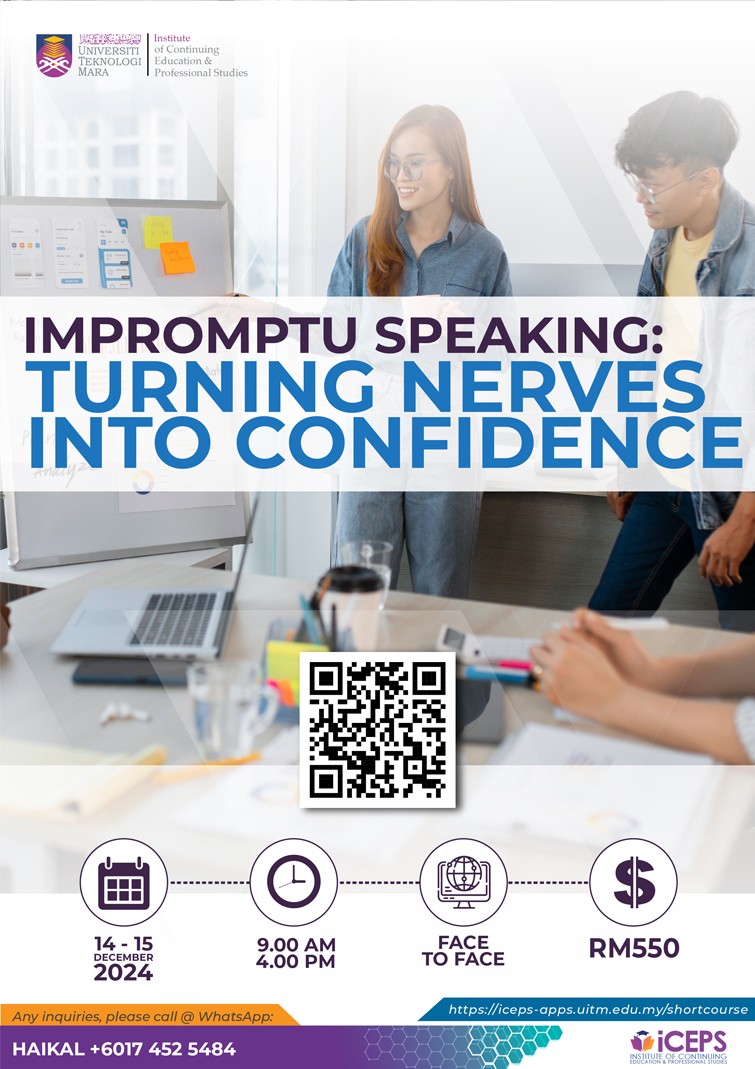Impromptu speaking is the art of delivering a spontaneous speech, often with little to no preparation. Many people find it daunting, but mastering this skill can transform nerves into confidence. At its core, successful impromptu speaking relies on staying calm, thinking clearly, and structuring thoughts quickly. Techniques like deep breathing, visualizing success, and focusing on key points can help control anxiety. Practicing to think on your feet and developing a toolkit of adaptable structures, such as the “point, reason, example” method, can also make a big difference. With consistent practice, nerves become fuel for clear, confident communication.
 Loading
Loading
IMPROMPTU SPEAKING: TURNING NERVES INTO CONFIDENCE
Communication
IMPROMPTU SPEAKING: TURNING NERVES INTO CONFIDENCE
Communication
Registration Closed

| 14/12/2024 - 15/12/2024 Tentative is available below. | |
| 09:00 AM - 04:00 PM | |
|
Bilik Latihan iCEPS
Institute Of Continuing Education & Professional Studies (iCEPS) UiTM-MTDC Technopreneur Centre, Universiti Teknologi MARA (UiTM) 40450, Shah Alam Selangor |
For any inquries, please contact :-
HAIKAL HAKIMIN BIN JAUDIN
| 0174525484 | |
| haikalhakimin@uitm.edu.my |
Description
Objective
To develop the ability to manage anxiety and speak confidently in spontaneous situations by learning strategies to organize thoughts quickly and communicate effectively. This includes practicing techniques to stay calm, think clearly under pressure, and present ideas in a structured, engaging manner, ultimately transforming nervous energy into confident, impactful speech.
Outline
- Introduction
- Understanding the Role of Nerves
- Shifting the Mindset: Viewing Nerves as Fuel
- Practical Tips to Convert Nerves into Confidence
- The Power of Practice and Experience
- Dealing with Mistakes and Imperfections
- Conclusion
Tentative
DAY 1
- Introduction
- Understanding the Role of Nerves
- Shifting the Mindset: Viewing Nerves as Fuel
- Practical Tips to Convert Nerves into Confidence
DAY 2
- The Power of Practice and Experience
- Dealing with Mistakes and Imperfections
- Conclusion

